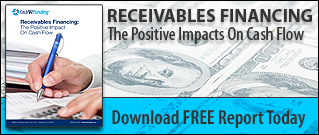 Payroll Financing: Bridging the Gap
Payroll Financing: Bridging the Gap
Bridging the gap………………in the world of business management and ownership………what does that mean to you?
Give it some thought…………
You still might be giving it some thought, but I’ll move forward.
At the end of the day, your company can be generating revenue, and that’s great. But are converting those receivables that keep piling up turning into cash?
There’s a good chance that some of those receivables sit on your books for 30, 60, and even 90 days.
That’s the gap I’m referring to. The gap between when an invoice is billed and the cash is collected. That period is just what kills your cash flow.
That’s cash you could have in your hands to:
- Pay vendors.
- Buy inventory.
- Business development.
- Make that Friday payroll.
A Suggestion………………..
So what can you possibly do to close or bridge that gap.
I have a suggestion that will absolutely blow you away. Consider factoring your accounts receivables.
By factoring your accounts receivables, you get the cash in hand you need to:
- Pay vendors.
- Buy inventory.
- Business development.
- Make that Friday payroll.
Yes…….all of that great stuff I listed above.
What is Factoring???
What is factoring? Payroll factoring is where you sell your accounts receivables relating to credit worthy customers to a third party known as a factoring company.
Advance rates can vary, but are typically around 80%. Then once the invoice is paid, you get the remaining portion back less the applicable fees.
It really is a great way to bridge the gap between when you bill your customers and the invoice is paid.
Why Should I Choose Factoring?
At the end of the day, if you own a small business seeking cash flow financing, your best option is to get your financing through a factoring company. Reason being:
- A factoring line is considered short term financing. This will result in your company not being indebted to a bank for a lengthy period of time.
- Depending on the factoring company you work with, obtaining a factoring line is relatively quick.
- Short term financing doesn’t always have to cost an arm and a leg. Depending on the type of financing you go after, it doesn’t always break the bank (no pun intended).
Strategies to Make the Factoring Experience More Efficient:
Like I’ve mentioned, putting a factoring line in place is a great way to help organize your receivables and cash flow management. This is because once you sell the invoice to the factor, you have the cash on hand you need.
I also want share with a few things you can do though to make the process a little more efficient.
- Submit invoices which relate to credit worthy customers.
- Make sure all of your contact information at the customer is up to date. This will help the factoring company. Most factoring companies have an extensive due diligence process which includes invoice verifications.
- Make sure you utilize accounting software. By doing so, your books and records will be much more organized. This will make your ability to manage your cash flow even easier.
- If you offer quick pay discounts, then you may want to either stop offering them or minimize them. By factoring receivables, you’re getting the cash you need. I suggest this just because I have seen customers take the discount even if they are not paying in the required time frame.
To run a business successfully, cash flow management is key. Securing financing through a factor is an awesome way to get your company’s cash flow in line. As I mentioned at the beginning of this article it is the best way to bridge the gap between when you bill your customer and when they pay you. When you do business with a third party factoring company you may find it a little easier to get the cash flow assistance you need. Best of luck!





